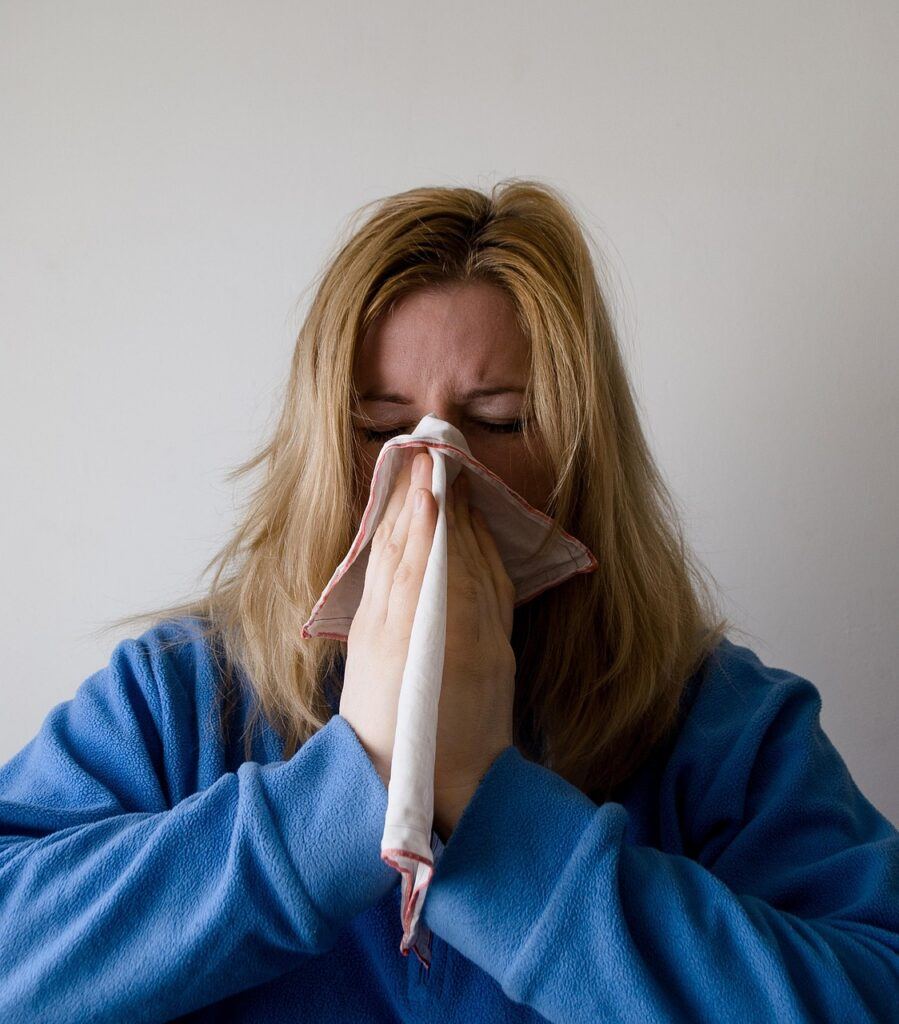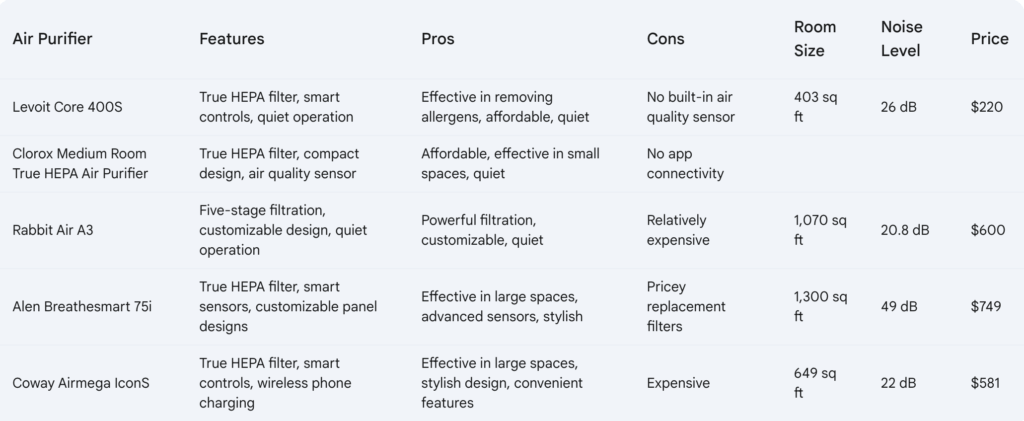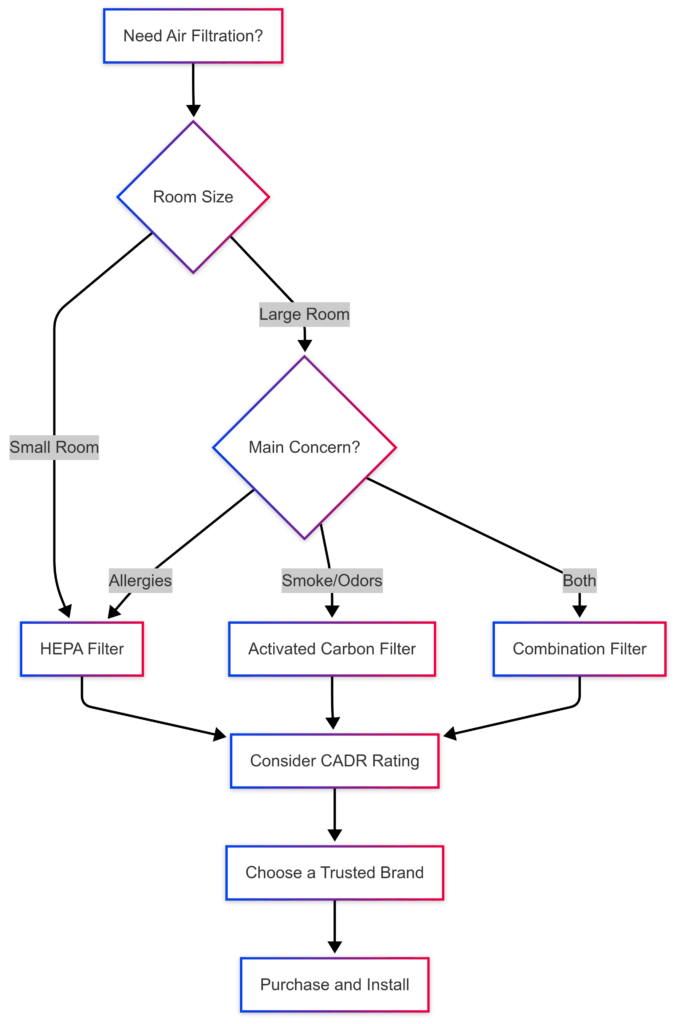
With allergies on the rise worldwide, creating spaces free from allergens has never been more essential. Whether at home or in the workplace, reducing airborne triggers can significantly improve comfort and health. While traditional methods such as regular cleaning and allergen-proofing play an important role, air purifiers provide a crucial defense against microscopic particles that can exacerbate allergy symptoms.
This article explores how smart air purifiers contribute to cleaner indoor environments, examines different purification technologies, and offers practical advice on selecting, maintaining, and maximizing the effectiveness of these devices.
How Air Purifiers Help Reduce Allergens
Air purifiers are designed to remove airborne irritants, such as pollen, dust mites, pet dander, and mold spores, by drawing in air, filtering out contaminants, and then recirculating clean air into the room. Scientific studies have shown that air purifiers can help alleviate allergy symptoms, but they work best as part of a broader allergy-management strategy. Because some allergens, like dust and pet hair, settle on furniture and flooring rather than staying suspended in the air, an air purifier alone is not a complete solution. However, when used alongside regular cleaning and proper ventilation, these devices can significantly reduce allergen exposure and improve indoor air quality.
The benefits of air purifiers extend beyond allergens. They can also remove pollutants and fumes, making them particularly useful for those living in urban environments where air quality is a concern. Individuals with eczema may also find relief, as reducing airborne irritants can help minimize flare-ups triggered by environmental factors.
Choosing the Right Air Purifier for Allergy Relief
Not all air purifiers are created equal, and understanding the differences in filtration technology can help determine which type is most effective for reducing allergens.
Among the most reliable options are HEPA filter air purifiers, which are widely regarded as the gold standard for allergy sufferers. These high-efficiency particulate air (HEPA) filters can trap 99.97% of airborne particles as small as 0.3 microns, including dust, pollen, and pet dander. Their ability to capture even the tiniest irritants makes them one of the most effective choices for those with allergies or asthma.
For individuals sensitive to odors, smoke, or chemicals, activated carbon filters provide additional protection. These filters are particularly useful for absorbing gaseous pollutants and volatile organic compounds (VOCs), which can contribute to respiratory discomfort. However, they are most effective when used in combination with HEPA filtration, as they do not capture solid allergen particles.
Other filtration methods, such as electrostatic filters, use an electric charge to attract and trap airborne contaminants. While they can capture smaller particles, they are not as efficient as HEPA filters when it comes to removing ultra-fine allergens. Similarly, UVGI (ultraviolet germicidal irradiation) cleaners target bacteria and mold spores using ultraviolet light but are often used alongside traditional filtration for optimal results.
For households with severe allergy concerns, whole-home air filtration systems integrated into HVAC systems provide a more comprehensive solution. These systems, such as the Trane CleanEffects™ Air Cleaner, can remove up to 99.98% of airborne particles, offering consistent air quality throughout an entire living space.
Reviews and Comparisons of Smart Air Purifiers for Allergies
When choosing a smart air purifier for allergies, it’s helpful to consider reviews and comparisons from reputable sources. Here’s a summary of some top-rated models:
When choosing a smart air purifier for allergies, it’s helpful to consider reviews and comparisons.

Importance of Regular Filter Replacement and Maintenance
Regular filter replacement and maintenance are essential for ensuring the continued effectiveness of air purifiers. As air purifiers filter the air, particles accumulate in the filters, eventually clogging them . A clogged filter reduces the purifier’s efficiency and may even lead to motor overload .
It’s generally recommended to change air purifier filters at least every 12 months . However, the frequency may vary depending on factors like usage, air quality, and the type of filter. Some signs that a filter needs replacement include:
- Worsening allergy or asthma symptoms
- Reduced airflow
- Unpleasant odors
- Increased dust
- Unusual noises from the purifier
In addition to filter replacement, regular maintenance practices like cleaning the purifier’s exterior and interior can help ensure optimal performance .
Smart Air Purifiers: Enhancing Convenience and Control
The latest generation of air purifiers incorporates smart technology, offering users greater control over their indoor air quality. Many models now connect to mobile apps and voice assistants, allowing for remote operation, real-time air quality monitoring, and automatic adjustments based on detected pollutants. These features make it easier to maintain a consistently clean environment, even when away from home.
Several leading smart air purifiers have gained popularity for their efficiency and ease of use. The Coway Airmega IconS, for example, features an intuitive color-coded air quality display, a built-in wireless charging dock, and seamless integration with Alexa and Google Assistant. Another highly rated option is the Levoit Core 400S, which offers quiet operation and smart app control, making it a practical choice for bedrooms or offices. For those seeking a multi-functional device, the Dyson Purifier Humidify+Cool Formaldehyde combines air purification with humidification and cooling, ensuring optimal air quality in various conditions.
Advanced Filtration Technologies for Maximum Effectiveness
Beyond standard HEPA filtration, some air purifiers incorporate advanced technologies to enhance their performance. Brands like AirDoctor have introduced UltraHEPA filters, capable of capturing particles as small as 0.003 microns, offering superior protection against allergens, smoke, and bacteria. Dyson’s Air Multiplier™ technology ensures purified air is evenly distributed across a room, while Shark’s Clean Sense IQ automatically adjusts filtration intensity based on real-time air quality measurements.
These innovations allow air purifiers to provide more than just basic filtration, making them an increasingly valuable investment for individuals looking to improve indoor air quality and reduce allergy symptoms effectively.
Maintaining an Air Purifier for Optimal Performance
To ensure an air purifier continues to operate at peak efficiency, regular filter replacement and maintenance are essential. Over time, trapped particles accumulate within the filter, reducing its effectiveness and potentially overloading the unit’s motor. Most manufacturers recommend replacing HEPA filters every 12 months, though this may vary depending on usage and air quality conditions.
A decrease in airflow, worsening allergy symptoms, and unusual odors can all indicate that a filter needs to be changed. Some smart air purifiers provide notifications when a replacement is necessary, making it easier to stay on top of maintenance. In addition to replacing filters, routine cleaning of the unit’s exterior and air intake vents helps prevent dust buildup and ensures continued efficiency.

Additional Strategies for Allergy-Free Living
While air purifiers play a crucial role in reducing airborne allergens, they are most effective when used as part of a broader strategy for managing indoor air quality. Regular cleaning is essential, as dust and pet dander tend to settle on surfaces rather than remaining airborne. Using a vacuum equipped with a HEPA filter can help capture fine particles from carpets and upholstery, while damp dusting prevents allergens from becoming airborne during cleaning.
Minimizing clutter can also reduce dust accumulation, as fewer surfaces mean fewer places for allergens to settle. Bedding should be encased in allergen-proof covers, and washing sheets and pillowcases frequently in hot water can help eliminate dust mites. Controlling indoor humidity levels is another important factor; keeping humidity below 50% can prevent mold growth and discourage dust mites from thriving.
For pet owners, frequent bathing and grooming can significantly reduce dander in the home, while restricting pets from bedrooms can create an allergen-free space for sleeping. In kitchens and bathrooms, proper ventilation helps prevent mold buildup, further improving indoor air quality.
Creating a Healthier Home Environment
Achieving an allergy-free living space requires a multi-faceted approach, combining the power of air purifiers with proactive cleaning, allergen-proofing, and humidity control. Smart air purifiers equipped with HEPA filters and advanced filtration technologies offer an effective way to reduce airborne allergens, but their benefits are most pronounced when integrated into a comprehensive allergy management plan.
By taking thoughtful steps to improve indoor air quality, individuals can experience fewer allergy symptoms, better sleep, and an overall healthier home environment. With the right combination of technology and maintenance, creating a cleaner, more comfortable space is well within reach.
Breathe Cleaner, Live Better: Why FastFilters.com is Your Smart Purification Solution
As allergies and air quality concerns continue to rise, finding the right air purification system has become essential for healthier living. While traditional cleaning methods help, they often fall short in eliminating airborne allergens like dust, pollen, pet dander, and mold spores. That’s where FastFilters.com steps in—offering advanced, smart air purification solutions that make it easier than ever to maintain a fresh, allergen-free home.
Why Air Purifiers Matter More Than Ever
Indoor air can often be more polluted than the air outside, especially in urban areas where dust and pollutants find their way inside. Even in well-maintained homes, allergens accumulate in the air, triggering sneezing, congestion, and even asthma flare-ups. Smart air purifiers, equipped with high-efficiency filtration, provide a proactive solution by continuously filtering out harmful particles, improving overall air quality, and reducing allergy symptoms.
But not all air purifiers are created equal. Choosing the right one requires considering factors such as filter efficiency, coverage area, noise levels, and smart capabilities. With so many options available, finding the perfect fit can be overwhelming. FastFilters.com simplifies the process by offering a curated selection of top-rated smart air purifiers, helping customers make informed choices without the hassle.
The Smart Choice: FastFilters.com’s Air Purification Solutions
FastFilters.com specializes in high-quality filtration systems designed to tackle the most common indoor air pollutants. Whether you need a purifier for a small bedroom, a large living space, or even whole-home filtration, their platform offers a seamless shopping experience with expert recommendations tailored to your needs.
Advanced Filtration for Maximum Protection
The best air purifiers rely on HEPA (High-Efficiency Particulate Air) filters, which capture 99.97% of airborne particles as small as 0.3 microns. FastFilters.com features top models that incorporate multi-stage filtration, including activated carbon filters for odor removal and pre-filters to capture larger debris.
For those looking for the latest in purification technology, FastFilters.com also offers models with UltraHEPA filtration, UV-C light sterilization, and PlasmaWave technology, ensuring that even the tiniest pollutants are neutralized.
Smart Features for Effortless Control
Modern air purifiers do more than just clean the air—they adapt to your lifestyle. Smart air purifiers available at FastFilters.com come equipped with Wi-Fi connectivity, app-based controls, and real-time air quality monitoring. This means you can adjust settings, track air quality, and even schedule purification cycles from your phone or through voice assistants like Alexa and Google Home.
For busy individuals or frequent travelers, FastFilters.com offers smart purifiers with auto-mode features, adjusting filtration levels automatically based on air quality readings. This ensures that your home stays fresh with minimal effort.
Convenience Without Compromise
One of the biggest challenges with air purifiers is filter maintenance. Clogged or outdated filters can reduce efficiency, making it essential to replace them on time. FastFilters.com takes the guesswork out of maintenance with convenient filter subscription services, delivering replacement filters right when you need them. Never worry about forgetting to change your filter again—your purifier will always run at peak performance.
Why Choose FastFilters.com?
Curated Selection, Expert Advice
FastFilters.com does the research for you, offering only the best-rated, most effective air purifiers on the market. Their detailed product descriptions, customer reviews, and expert recommendations make it easy to compare options and find the best purifier for your home.
Competitive Pricing & Exclusive Deals
By partnering with leading air purifier brands, FastFilters.com offers competitive prices and exclusive discounts on high-quality filtration systems. With seasonal promotions and bundle deals, upgrading your indoor air quality has never been more affordable.
Hassle-Free Shopping & Fast Delivery
Navigating endless product listings can be frustrating. FastFilters.com simplifies the experience with a user-friendly website, clear product categories, and quick checkout options. Plus, with fast shipping and reliable customer support, you can enjoy cleaner air without delay.
Take the First Step Toward Cleaner Air
Investing in a smart air purifier is one of the best decisions you can make for your health, comfort, and overall well-being. With FastFilters.com, finding the perfect purifier has never been easier. Whether you’re looking to combat seasonal allergies, eliminate pet dander, or create a fresher home environment, their expertly curated selection ensures you get the best air purification technology available.
Don’t wait—start breathing cleaner, fresher air today. Visit FastFilters.com and find your perfect air purifier now.


Air purifiers can make a big difference for those struggling with allergies, especially in homes where allergens like dust, pet dander, and pollen are persistent issues. What are the most important features to look for in a smart air purifier when creating an allergy-free zone? Have you noticed a significant difference in air quality when using specific models or technologies like HEPA filters versus activated carbon?
Hi, Marlinda. Thanks for your insightful comment! You’re absolutely right, and air purifiers can be game-changers for allergy sufferers.
When creating an allergy-free zone, there are several key features to prioritize in a smart air purifier:
HEPA Filtration: This is non-negotiable. Look for a true HEPA filter, as it captures 99.97% of particles as small as 0.3 microns, which includes many common allergens.
CADR Rating (Clean Air Delivery Rate): This indicates how quickly the purifier can clean a room. Match the CADR rating to the size of your space for optimal performance.
Smart Features: Wi-Fi connectivity, app control, and scheduling can make managing your air quality much easier. Some smart purifiers even monitor air quality in real time and adjust settings automatically.
Activated Carbon Filters: These are crucial for removing odors and volatile organic compounds (VOCs), which can also trigger allergies or sensitivities. If you have pets or concerns about chemical fumes, this feature is essential.
Filter Replacement Indicators: Smart notifications or indicators that remind you when to replace filters are very helpful for maintaining optimal performance.
Regarding your question about HEPA versus activated carbon:
HEPA filters excel at removing particulate matter like dust, pollen, and pet dander.
Activated carbon filters are more effective at absorbing gases, odors, and VOCs.
In my experience, using a combination of both HEPA and activated carbon filters provides the most comprehensive air purification. Many higher-quality air purifiers use a combined filter or multiple filter stages to achieve this.
Personally, I’ve noticed a significant difference in air quality when using models with true HEPA filters, especially during peak allergy seasons. The reduction in dust and pet dander is often immediately noticeable. The added activated carbon filters have helped tremendously with pet odors and cooking smells.
I hope this information helps you in your search for the perfect allergy-friendly air purifier!